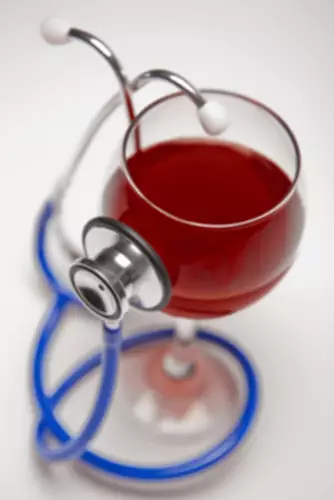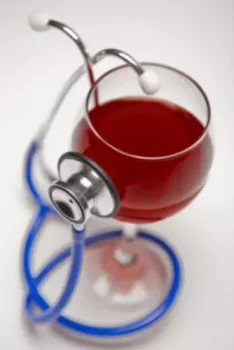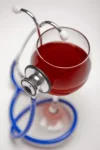
Despite these critiques, the overarching shift to viewing addiction through the disease lens aims to enhance access to treatment and justify the need for insurance coverage and medical support. By emphasizing the medical aspect of addiction, society is encouraged to approach addiction treatment with the seriousness and support it deserves, thus paving the way for recovery-oriented policies and initiatives. Professor Alison Ritter adds to this critique by stating why is alcoholism considered a chronic disease that the disease model oversimplifies addiction. She advocates for an understanding that takes into account cultural and social contexts, which may provide a more nuanced perspective on addiction and recovery. This explains why individuals who chronically abuse drugs or alcohol begin to appear lethargic, unmotivated and depressed, and report a lack of pleasure in things that were once pleasurable.
Chronic Nature and Management
In most cases, these feelings of pleasure are caused by the release of certain chemicals in the brain. These chemicals reward the individual, making them repeat the behaviors that produce those feelings (like eating and drinking). Getting the right treatment for your child is a process, and navigating the current system requires determination and careful review. In addiction, there is no infectious agent (as in tuberculosis), no pathological biological process (as in diabetes), and no biologically degenerative condition (as in Alzheimer’s disease). The only “disease-like” aspect of addiction is that if people do not deal with it, their lives tend to get worse. The other thing is I think there’s been a rise of influencers talking about these meds.
Lessons from genetics
The best way to combat stigma and addiction is to commit to treatment and be transparent about the process, Dr. Bloch continues. “We would never argue a child is responsible for other inherited conditions like cystic fibrosis,” he says. In fact, as much as half of addictions seem to be inherited, says Dr. Bloch, which makes the stigma even more confusing. To learn more, check out the Wu Tsai Neurosciences Institute at neuroscience.stanford.edu. This episode was produced by Michael Osborne with production assistance by Morgan Honaker and Christian Haigus.
Substance addiction
That’s something you get out of taking the risk to think about this as a health problem rather than a crime. In the last five years or so, I’ve been fortunate to be one of the leaders of a Wu Tsai Big Ideas Grant, along with Rob Malenka and Brian Knutson, focused on the neuroscience of addiction. I think we all know at this point that addiction is another major epidemic that is sweeping our country and the world, but there are few topics that are more misunderstood than addiction. To really delve into this question of why we do think of addiction as a disease, I spoke to Dr. Keith Humphreys, a https://ecosoberhouse.com/ Professor of Psychiatry at Stanford University, and a leading commentator on the addiction epidemic.

“The longer a time that you spend in your addictive state, the more the cues attached to your drug or drink of choice is going to turn on the dopamine system,” Lewis says. At the same time as the release of dopamine, nicknamed the feel-good chemical, is being ramped up, there is a decreased activity in areas of the brain responsible for judgment and decision-making. While some individuals may stop substance use on their own, lasting recovery often requires professional support. Therapy, medical care, and alcohol rehab community support significantly improve the chances of maintaining sobriety. There’s no cure for addiction, but it can be managed effectively with ongoing treatment and support, similar to other chronic conditions. Addiction alters brain circuits related to reward and impulse control, making it difficult for individuals to stop using substances without help.

Addicts were often ostracized, punished, or left to fend for themselves in a world that viewed their struggles as self-inflicted wounds. But as science progressed, so did our understanding of the human brain and its intricate workings. As Lewis explains to Fairfax Media, repeated alcohol and drug use causes tangible changes in the brain.
Factors Contributing to Addiction

Therapy combined with community support, recovery coaching, and post-treatment care form a comprehensive framework that respects addiction’s complexity and acknowledges the challenges of managing a chronic disease. In addition to peer influence, social factors such as socioeconomic status, education level, and access to resources can also impact addiction rates. For example, individuals from lower socioeconomic backgrounds may face increased stressors and limited access to healthcare and support services, which can contribute to the development of addictive behaviors. Genetic predisposition can contribute to an individual’s susceptibility to addiction, as some individuals may have a higher risk due to their genetic makeup. Additionally, certain brain regions and neurotransmitters involved in reward and pleasure pathways can be altered in individuals with addiction, reinforcing the addictive behavior.

I mean, half of Americans are overweight and yet we have a certain amount of mercy. It’s like we’re all pretty frail, we’re all, in my view, sort of fundamentally flawed. We can be disappointed in ourselves and others when they engage in bad behavior but still say but we’re still going to show some compassion to you.
Box 1 What’s in a name? Differentiating hazardous use, substance use disorder, and addiction.
- During the 1990s – known as the “decade of the brain” – advancements in neuroscience and brain imaging meant “technology caught up with the terminology,” Ritter says.
- The fact that addiction changes the way the brain works lends credibility to the idea of a lifelong disease, even though, according to the National Institute of Drug Abuse, the changes are “persistent”—which is not the same as permanent.
- For generations, addiction was seen as a character flaw, a sign of weak willpower or moral corruption.
- Effective management of addiction usually requires multiple episodes of treatment, as the chronic nature of the disease often leads to relapses.
Nonetheless, akin to the undefined overlap between hazardous use and SUD, the field has not identified the exact thresholds of SUD symptoms above which addiction would be definitively present. In the end, understanding addiction as a disease isn’t just about changing how we treat those struggling with substance use disorders. It’s about changing how we view human vulnerability, resilience, and the intricate dance between our brains, our experiences, and our choices. It’s a reminder of our shared humanity and the power of compassion in the face of suffering. But it’s not just about having an “addiction gene.” Instead, it’s a complex interplay of various genetic factors that can influence how our brains respond to substances, how quickly we metabolize them, and even how prone we are to risk-taking behaviors.
3 Someone using their opioid pain medications as prescribed can develop some physiological dependence but may not exhibit the compulsive behaviors of addiction. Conversely, some drugs may be used in a compulsive manner that indicates an addiction without physically relying on it to feel well. Incorporating these social and psychological dimensions not only promotes a more comprehensive understanding of addiction but enhances the effectiveness of treatment by addressing the root causes and environmental triggers. This multidimensional view aligns with contemporary practices and underscores the importance of a supportive network in promoting recovery.


Leave a Reply